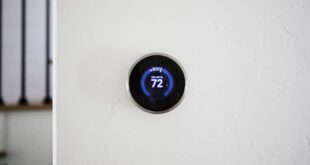Electric Energy Efficiency Savings Grows Significantly in the U.S., New Report Shows
 WASHINGTON (January 3, 2012)—Electric energy efficiency savings are on a growth path in the U.S., and electric utilities are a major force behind the trend. The findings come from a new report published by the Institute for Electric Efficiency (IEE).
WASHINGTON (January 3, 2012)—Electric energy efficiency savings are on a growth path in the U.S., and electric utilities are a major force behind the trend. The findings come from a new report published by the Institute for Electric Efficiency (IEE).
Overall, the IEE report, Summary of Ratepayer-Funded Electric Efficiency Impacts, Budgets and Expenditures (2010-2011), found that ratepayer-funded energy efficiency and demand response programs in the U.S. saved enough electricity to power almost 10 million homes in 2010, representing approximately 112 million megawatt-hours of electricity (MWh). These savings signify an increase of 21 percent over 2009 levels, or nearly 20 million MWh. IEE projects that total electric savings from these energy-efficiency programs will continue double digit increases in the future.
Lisa Wood, IEE Executive Director, said, “This steady increase in electricity savings is really impressive. And the growth in electric utility expenditures for energy efficiency is the major reason behind it.
“Efficiency expenditures in 2010 totaled $4.8 billion, representing an increase of 28 percent over the prior year. Electric utilities accounted for 88 percent of all ratepayer-funded electric efficiency expenditures in 2010. In addition, ratepayer-funded electric efficiency budgets reached a total of $6.8 billion in 2011.”
Ed Wisniewski, Executive Director of CEE, commented that, “Over the four years since 2007, savings impacts have grown 80 percent, justifying the ramp up of investment in efficiency that’s also occurred over this time period. This scale affords a unique opportunity to address the challenges ahead and reap the tremendous savings that are still available cost-effectively.”
Ralph Cavanagh, Energy Program Co-Director for the Natural Resources Defense Council, said, “NRDC joins the Institute in celebrating this strong evidence of energy efficiency’s continued momentum as the nation’s fastest, cheapest and cleanest source of additional electricity supply.”
In looking at the U.S. Census regions, the IEE report found that the Midwest had the largest percent increase in electric efficiency savings between 2009 and 2010 (38.9 percent), followed by the Northeast (38.5 percent), and the South (19.8 percent) and the West (5.3 percent).
The IEE report also found that relative to their 2010 budgets, 37 states increased their 2011 energy efficiency budgets. And the overall increase in 2011 budgets relative to 2010 budgets was a robust 25 percent.
Wood continued, “Given that half the states now have energy efficiency resource standards, and that several of these standards have scheduled increases, we believe that total U.S. ratepayer-funded budgets for electric efficiency will easily exceed $12 billion by 2020.”
Wisniewski added, “CEE members see great value in working together to maintain and enhance credible and reliable efficiency program information as evidenced by their 97 percent response rate, and value the opportunity to work with IEE.”
 Alternative Energy HQ solar power for homes, wind energy, and bio fuel issues
Alternative Energy HQ solar power for homes, wind energy, and bio fuel issues







